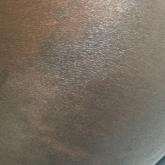Article

Diffuse Dermal Angiomatosis
- Author:
- Khasha Touloei, DO
- Emily Tongdee, MD
- Brittany Smirnov, DO
- Carlos Nousari, MD
Diffuse dermal angiomatosis is commonly reported in patients with hypoxic comorbidities such as smoking or vascular disease as well as in women...
